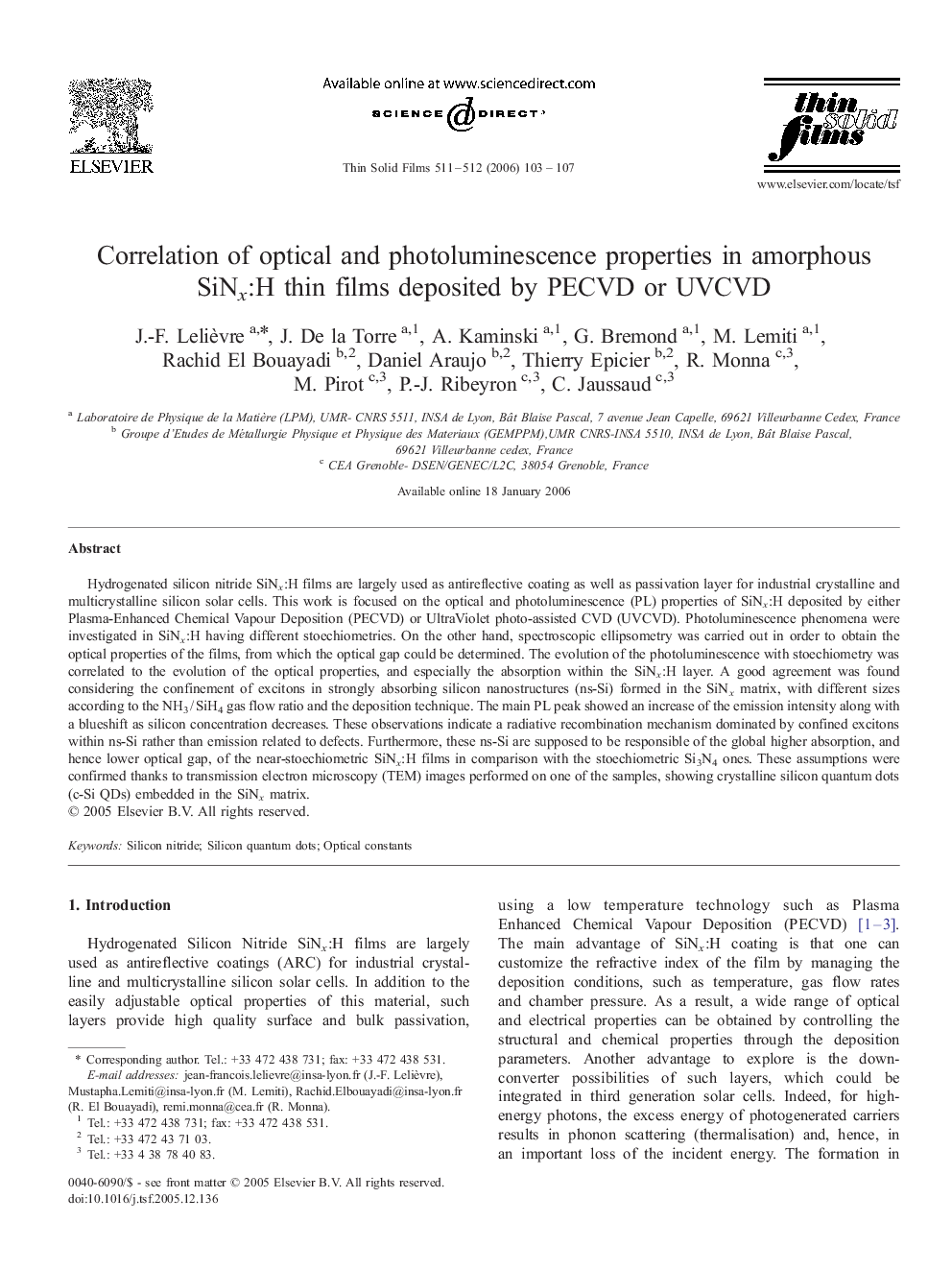| Article ID | Journal | Published Year | Pages | File Type |
|---|---|---|---|---|
| 1673284 | Thin Solid Films | 2006 | 5 Pages |
Hydrogenated silicon nitride SiNx:H films are largely used as antireflective coating as well as passivation layer for industrial crystalline and multicrystalline silicon solar cells. This work is focused on the optical and photoluminescence (PL) properties of SiNx:H deposited by either Plasma-Enhanced Chemical Vapour Deposition (PECVD) or UltraViolet photo-assisted CVD (UVCVD). Photoluminescence phenomena were investigated in SiNx:H having different stoechiometries. On the other hand, spectroscopic ellipsometry was carried out in order to obtain the optical properties of the films, from which the optical gap could be determined. The evolution of the photoluminescence with stoechiometry was correlated to the evolution of the optical properties, and especially the absorption within the SiNx:H layer. A good agreement was found considering the confinement of excitons in strongly absorbing silicon nanostructures (ns-Si) formed in the SiNx matrix, with different sizes according to the NH3 / SiH4 gas flow ratio and the deposition technique. The main PL peak showed an increase of the emission intensity along with a blueshift as silicon concentration decreases. These observations indicate a radiative recombination mechanism dominated by confined excitons within ns-Si rather than emission related to defects. Furthermore, these ns-Si are supposed to be responsible of the global higher absorption, and hence lower optical gap, of the near-stoechiometric SiNx:H films in comparison with the stoechiometric Si3N4 ones. These assumptions were confirmed thanks to transmission electron microscopy (TEM) images performed on one of the samples, showing crystalline silicon quantum dots (c-Si QDs) embedded in the SiNx matrix.
